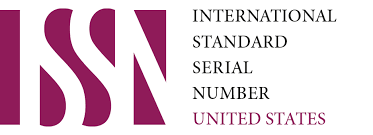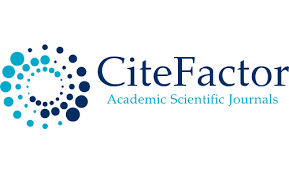Learning Based on QR Code Technology to Improve Teacher Performance at SDN 90 SIPATANA
Keywords:
QR Code, Teacher Performance, Learning TechnologyAbstract
The purpose of this research is to carry out QR Code-based learning to improve teacher performance. In this study using several data collection techniques, namely, interviews, documentation and observation. Interviews were conducted with elementary school teachers at SDN 90 SIPATANA for a preliminary study and to assess the equipment being made. In this study, the results of the study showed that the data was collected through teacher interview observations, then managed the data, and concluded whether the Quick Response Code learning media was used in the teaching and learning process in class VI at SDN 90 SIPATANA. The result of this QR Codebased learning is to increase the effectiveness of the teacher's performance in learning, streamline learning time, add insight, and provide a new atmosphere in learning
References
Anshori. (2018). The Effectiveness of PBL (Problem Based Learning) Assisted QR Code Learning in Improving Mathematics Learning Outcomes. Journal of Education and Teaching Studies, 6 (1), 59. Link:http://jm.ejournal.id/index.php/mendidik/article/view/212/179
Ashfahany., Adi., & Hariyanto. (2017). The Effectiveness of PBL (Problem Based Learning) Assisted QR Code Learning in Improving Mathematics Learning Outcomes. Journal of Education and Teaching Studies, 6 (1), 59. Link:http://jm.ejournal.id/index.php/mendidik/article/view/212/179
Bahraeni. (2017). DevelopmentThematic Teaching Materials for Class V Theme 8 Our Friendly Environment Assists with QR Codes at SD Negeri 53 Lubuklinggau. Journal of Eduscience (JES), 9 (2), 3. Links:file:///C:/Users/hp/Downloads/2581-7505- 1-PB. pdf
Darmawan. (2018). Effectiveness of Collaborative QR Code and Edmodo (QRCE) on Motivation and Learning Outcomes of Mol Concept Material in Class X Students of SMK Kesehatan Purworejo in the 2018/2019 Academic Year. Science Education Journal, 9 (1), 12. Link:file:///C:/Users/hp/Downloads/41376- 104135-2-PB. pdf
Gustiana Eriska., Mulyono Dodik., & Valen Andri. (2022). Development of Thematic Teaching Materials for Class V Theme 8 Our Friendly Environment Assisted with QR Code at SD Negeri 53 Lubuklinggau. Journal of Eduscience (JES), 9(2), 1-10. Link:file:///C:/Users/hp/Downloads/2581-7505-1-PB%20(1).pdf
Hayati et al. (2017). Use of Audio-Visual-Based Learning Media to Improve Indonesian Language Learning Outcomes in Elementary Schools. Pendas Cakrawala Journal, 6 (2), 109. Links:file:///C:/Users/hp/Downloads/PENGGUNAAN_MEDIA_PEMBELAJAR AN_BERBASIS_AUDIO_VISUA.pdf
Iswan & Herwina. (2018). Ashfahany., Adi., & Hariyanto. (2017). The Effectiveness of PBL (Problem Based Learning) Assisted QR Code Learning in Improving Mathematics Learning Outcomes. Journal of Education and Teaching Studies, 6 (1), 59. Link: http://jm.ejournal.id/index.php/mendidik/article/view/212/179
Kosasih. (2021). Development of Thematic Teaching Materials for Class V Theme 8 Our Friendly Environment Assisted with QR Code at SD Negeri 53 Lubuklinggau. Journal of Eduscience (JES), 9 (2), 3. Links:file:///C:/Users/hp/Downloads/2581-7505-1- PB%20(2).pdf
Kristanto et al. (2017). Use of Audio-Visual-Based Learning Media to Improve Indonesian Language Learning Outcomes in Elementary Schools. Pendas Cakrawala Journal, 6 (2), 109. Links:file:///C:/Users/hp/Downloads/PENGGUNAAN_MEDIA_PEMBELAJAR AN_BERBASIS_AUDIO_VISUA%20(1).pdf
Majid RA, Apriliya S., Suryana Y. (2021). Quick Response Code (QR Code) Learning Media Based on Poetry Cards in Grade IV Elementary School. Pedadidaktics : Scientific Journal of Elementary School Teacher Education, Vol 8 (2), Hal 530-534.
Link access: https://ejournal.upi.edu/index.php/pedadidaktika/article/view/36314/15658
Malawi. (2017). Development of Thematic Teaching Materials for Class V Theme 8 Our Friendly Environment Assisted with QR Code at SD Negeri 53 Lubuklinggau. Eduscience Journal(JES), 9 (2)Link:file:///C:/Users/hp/Downloads/PUSE OF_MEDIA_PEMBELAJARAN_BERBA SIS_AUDIO_VISUA%20(1).pdf
Marzoans. (2014). The Effectiveness of PBL (Problem Based Learning) Assisted QR Code Learning in Improving Mathematics Learning Outcomes. Journal of Education and Teaching Studies, 6 (1), 59. Link:http://jm.ejournal.id/index.php/mendidik/article/view/212/179
Meynisfhy, A., Satria, TG (2021). Development of Thematic Teaching Materials for Class V Theme 8 Our Friendly Environment Assisted with QR Code at SD Negeri 53 Lubuklinggau. Journal of Eduscience (JES), 9 (2), 2. Link:file:///C:/Users/hp/Downloads/2581-7505-1-PB%20(5).pdf
Mustakim., Walanda., & Gonggo. (2013). The Effectiveness of PBL (Problem Based Learning) Assisted QR Code Learning in Improving Mathematics Learning Outcomes. Journal of Education and Teaching Studies, 6 (1), 60. Link:http://jm.ejournal.id/index.php/mendidik/article/view/212/179
Nasruddin. (2020). Development of Thematic Teaching Materials for Class V Theme 8 Our Friendly Environment Assisted with QR Code at SD Negeri 53 Lubuklinggau. Journal of Eduscience (JES), 9 (2), 2. Link:file:///C:/Users/hp/Downloads/2581-7505-1-PB%20(4).pdf
Abdul Rahmat & Rusmin Husain. (2021) School-Based Management for Improving the Quality of Elementary School Education. Yogyakarta: Zahir Publishing
Abdul Rahmat.
Rinaldi et al. (2017). Use of Audio-Visual-Based Learning Media to Improve Indonesian Language Learning Outcomes in Elementary Schools. Pendas Cakrawala Journal, 6 (2), 109.Links:file:///C:/Users/hp/Downloads/PENGGUNAAN_MEDIA_PEMBELAJAR AN_BERBASIS_AUDIO_VISUA%20(2).pdf
Rosdianwinata1 Eka., Rifa'i Rusdian., Sutihat., & Suryani Nina. (2022). The Effectiveness of PBL (Problem Based Learning) Assisted QR Code Learning in Improving Mathematics Learning Outcomes. Journal of Education and Teaching Studies, 6 (1), 58-65.Link:http://jm.ejournal.id/index.php/mendidik/article/view/212/179
Ruheili, Al. (2015). Effectiveness of Collaborative QR Code and Edmodo (QRCE) on Motivation and Learning Outcomes of Mol Concept Material in Class X Students of SMK Kesehatan Purworejo in the 2018/2019 Academic Year. Science Education Journal, 9 (1), 12. Link:file:///C:/Users/hp/Downloads/41376- 104135-2-PB%20(1).pdf
Setia Sari Utami & Asep Sukenda Egok. (2020). Development of Thematic Teaching Materials for Class V Theme 8 Our Friendly Environment Assisted with QR Code at
SD Negeri 53 Lubuklinggau. Journal of Eduscience (JES), 9 (2), 2. Link:file:///C:/Users/hp/Downloads/2581-7505-1-PB%20(6).pdf
Sharma. (2013). effectivenessPBL (Problem Based Learning) Learning Assisted by QR Code in Improving Mathematics Learning Outcomes. Journal of Education and Teaching Studies, 6 (1), 60. Link:file:///C:/Users/hp/Downloads/2581-7505-1-PB%20(6).pdf
Susilo Sigit Vebrianto. (2020). Use of Audio-Visual-Based Learning Media to Improve Indonesian Language Learning Outcomes in Elementary Schools. Journal horizon pendas,6 (2), 108 –114Link:file:///C:/Users/hp/Downloads/PUSE OF_MEDIA_PEMBELAJARAN_BERBA SIS_AUDIO_VISUA%20(3).pdf
Susilo. (2018). Use of Audio-Visual-Based Learning Media to Improve Indonesian Language Learning Outcomes in Elementary Schools. Horizon Journal pendas, 6 (2),109. Link: file:///C:/Users/hp/Downloads/PUSE OF_MEDIA_PEMBELAJARAN_BERBA SIS_AUDIO_VISUA%20(3).pdf
Horns. (2019). Effectiveness of Collaborative QR Code and Edmodo (QRCE) on Motivation and Learning Outcomes of Mol Concept Material in Class X Students of SMK Kesehatan Purworejo in the 2018/2019 Academic Year. Science Education Journal, 9 (1), 12. Link:file:///C:/Users/hp/Downloads/41376- 104135-2-PB%20(2).pdf
Tyasning Diah Megasari. (2020). Effectiveness of Collaborative QR Code and Edmodo (QRCE) on Motivation and Learning Outcomes of Mol Concept Material in Class X Students of SMK Kesehatan Purworejo in the 2018/2019 Academic Year. Journal of Science Education, 9 (1), 12-20. Link:file:///C:/Users/hp/Downloads/41376-104135-2-PB%20(4).pdf
valen. (2020). Development of Thematic Teaching Materials for Class V Theme 8 Our Friendly Environment Assisted with QR Code at SD Negeri 53 Lubuklinggau. Journal
Eduscience (JES),9(2),2.Links:file:///C:/Users/hp/Downloads/2581-7505- 1-PB%20(7).pdf
Downloads
Published
Issue
Section
License

This work is licensed under a Creative Commons Attribution-NonCommercial 4.0 International License.
User Rights
Under the Creative Commons Attribution-NonCommercial 4.0 International (CC-BY-NC), the author (s) and users are free to share (copy, distribute and transmit the contribution).
Rights of Authors
Authors retain the following rights:
1. Copyright and other proprietary rights relating to the article, such as patent rights,
2. the right to use the substance of the article in future works, including lectures and books,
3. the right to reproduce the article for own purposes, provided the copies are not offered for sale,
4. the right to self-archive the article.












